© 2024 All Rights Reserved. Don’t distribute or repurpose this work with out written permission from the copyright holder(s).
Printed from https://www.damninteresting.com/a-trail-gone-cold/
Iceland is thought to the remainder of the world because the land of Vikings and volcanos, an island caught between continents on the extremities of the map. Distant and relatively inhospitable, it was settled solely as way back because the ninth century, and has seen little extra in-migration since. Even right this moment, greater than 90 % of Iceland’s 390,000 residents can hint their ancestry again to the earliest everlasting inhabitants, a Nordic-Celtic combine. The custom of the Norse sagas lives on within the type of cautious record-keeping about ancestry—and a nationwide ardour for family tree. In different phrases, it isn’t the place to encounter previous household mysteries.
However rising up within the capital metropolis of Reykjavík within the Fifties, neurologist Dr. Kári Stefánsson heard tales that left him curious. Stefánsson’s father had come from Djúpivogur, an japanese coastal city the place everybody nonetheless spoke of a Black man who had moved there early within the nineteenth century. “Hans Jónatan”, they referred to as him—a popular shopkeeper who had arrived on a ship, married a spirited girl from an area farm, and have become a revered member of the group.
The native census did report a person by the title of Hans Jónatan, born within the Caribbean, who was working on the basic retailer in Djúpivogur within the nineteenth century—however that was all. No photos of the person had survived, and his time in Iceland was properly earlier than every other people with African ancestry are identified to have visited the island. If tiny, distant Djúpivogur did have a Black man arrive within the nineteenth century, the circumstances should have been uncommon certainly.
It was an intriguing puzzle—and strong grounds for a scientific investigation. Given the quantity of homogeneity within the baseline Icelandic inhabitants, the genetic signature of 1 relative newcomer with distinct ancestry may nonetheless stand out throughout a big pattern of his descendants. Geneticists thus joined locals and historical past students, they usually pieced collectively a narrative that bridged three continents.
In 1964, College of Copenhagen regulation professor Knud Waaben wrote an intensive assessment of two males born into slavery within the 18th century who ended up preventing for his or her rights in Danish courtroom. Historical past had misplaced observe of each males, in response to Waaben, and solely hypothesis was potential as to any later levels within the lifetime of both.
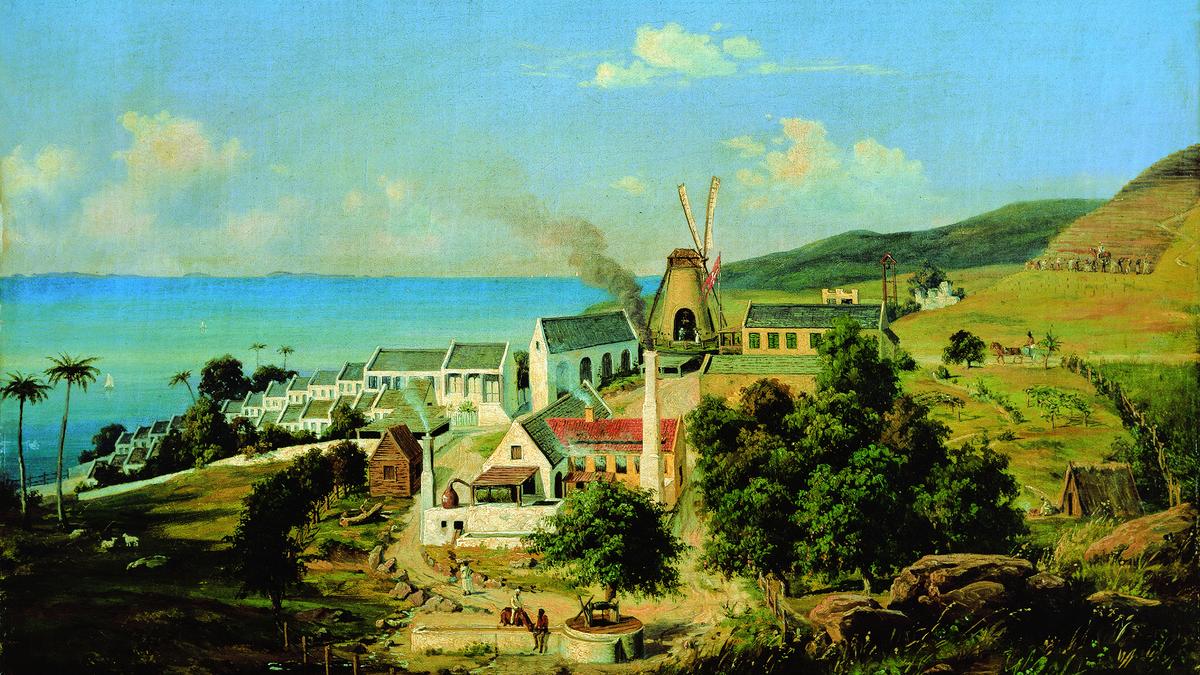
One of many two males had been born on 12 April 1784 within the city of Christiansted on the Caribbean island of St. Croix. This small piece of land—named by the French, intermittently occupied by the British, and technically owned by the Danish—exemplified the European-colonial squabbling that was enjoying out all around the Caribbean, to not point out the Americas and likewise the world typically.
The economies of St. Croix and the opposite Danish West Indies had been pushed nearly solely by the Europeans’ comparatively new however insatiable want for sugar. Manufacturing of the stuff was based mostly on an incomprehensible quantity of slave labour. Generations of field-slaves and house-slaves endured brutal situations throughout tons of of sugarcane plantations as European sugar magnates turned enormously rich. By the late 18th century, St. Croix held round 3,000 white folks—nearly all males—plus about ten instances as many Black slaves. Escape makes an attempt had been simply thwarted, since St. Croix afforded only a few locations to cover. Captured runaways had been subjected to vicious beatings, public shaming, or each, even when they had been kids.
In Danish, he was referred to as Hans Jonathan, as he was born into slavery and thus not entitled to a surname. His mom was a home slave named Regina, who on the time was in her mid-20s; her being pregnant was probably involuntary. Regina’s proprietor was a rich younger widow named Henrietta Cathrina Schäffer, who introduced together with her Regina and several other different slaves when she married Ludvig Heinrich Ernst von Schimmelmann, an area choose from a outstanding German-Danish household who was quickly climbing via the political ranks of the Danish West Indies. In 1784, the identical 12 months Hans Jonathan was born, Schimmelmann was appointed Governor-Normal of the territory.
Hans was noticeably lighter-skinned than his mom, which recommended he was the offspring of Regina and a free white man. Precisely which free white man is unknown; historic information are obscure, indicating solely that the daddy in query was “stated to be the secretary”. In his in depth 2014 biography of Hans Jonathan, Icelandic anthropologist Gísli Pálsson weighs the proof and considers a number of potentialities. He factors out that if “the secretary” is taken actually, essentially the most logical match is a person named Hans Gram, who was the Schimmelmanns’ scribe on the time (although Gram would later discover minor fame in the US as a composer). That stated, “the secretary” isn’t a dependable clue, as it might have been both somebody’s guess or a deliberate cowl story. Different candidates for Hans’ paternity can’t be dominated out—together with Schimmelmann himself.
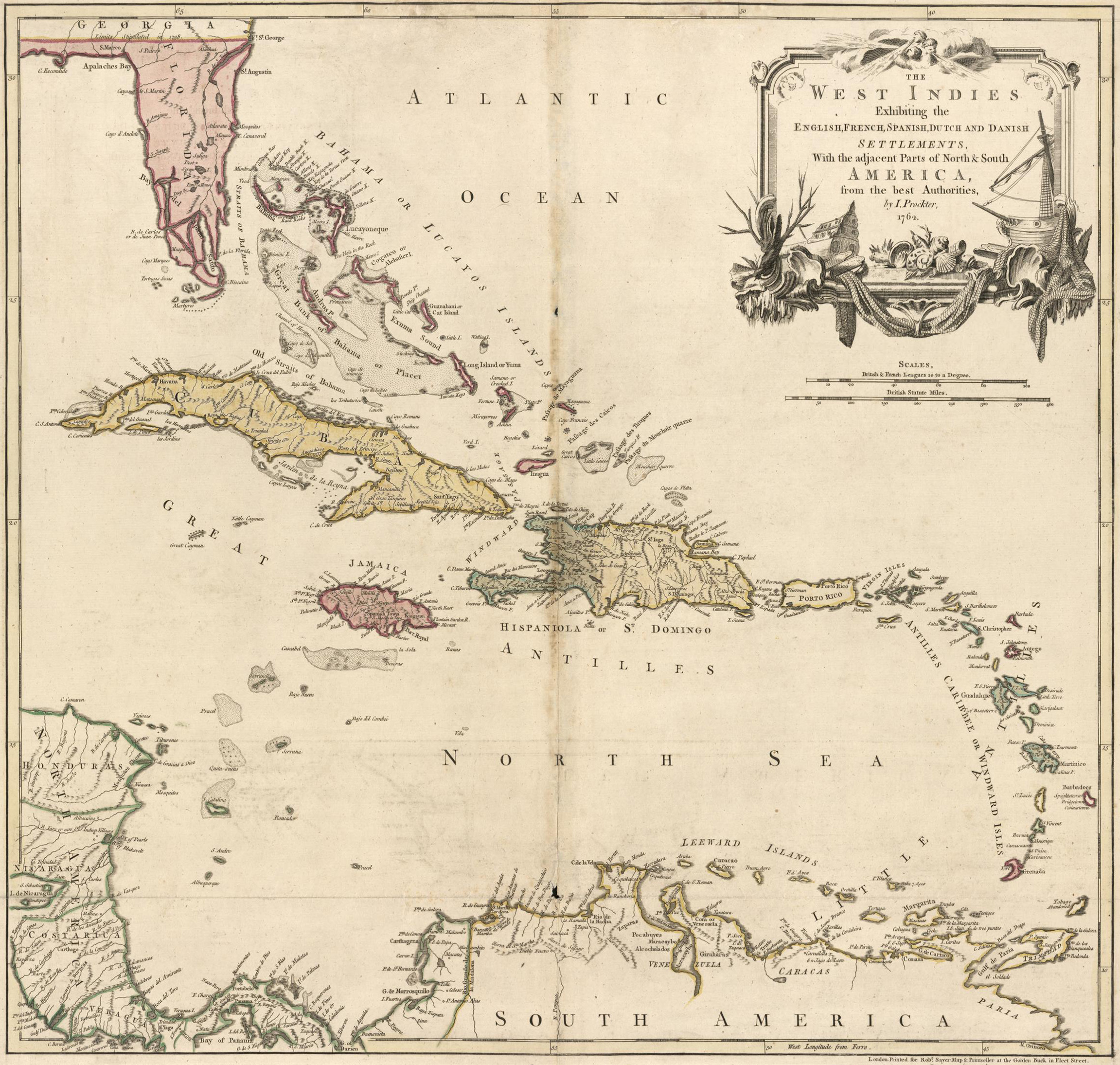
Little Hans spent his early childhood on the Schimmelmanns’ sugar plantation, Structure Hill, selecting up three languages used domestically (Danish, English, and the St. Croix creole of the time). In 1788, Schimmelmann left his submit within the Danish West Indies, and he and Henrietta made preparations to return to Copenhagen and settle in an prosperous neighbourhood. They chose a number of grownup slaves to take again to the homeland—together with Hans’s mom, now referred to as Emilia Regina after a compulsory baptism in 1787, and her brother. The slave kids had been one other matter. They had been thought-about too younger to trouble with, so four-year-old Hans, alongside along with his youthful half-sister and their two cousins, had been left behind in Christiansted. Surprisingly, 4 years later, the Schimmelmanns seem to have modified their minds; they organized for the 2 eight-year-olds—Hans and certainly one of his cousins—to journey to Copenhagen and be a part of the family in 1792.
Europe was one other world relative to St. Croix, and never simply because it was colder. The languages had been principally acquainted, however the capital of Denmark was giant, bustling, and cosmopolitan—house to nearly 100,000 folks from quite a lot of backgrounds. Far faraway from the sugar plantation, right here the entire slaves had been house-slaves; they had been chargeable for taking care of the Schimmelmanns’ kids, and cleansing and sustaining the household’s lavish five-storey mansion to the requirements of European aristocrats.
Ludvig Schimmelmann died on the finish of 1793; most of his surviving kids moved out of their younger maturity earlier than the tip of the century. Now the top of family, Henrietta Schimmelmann made it very evident that she believed within the conventional definition of slavery, whereby her slaves would do her bidding and that was that. The Copenhagen census of 1801 lists that she had 9 “servants” on the time, together with Hans, his mom, and his cousin. Hans was given a small quantity of education—sufficient to study to learn and write and do arithmetic, which suited Hans’s curiosity and mind. Alongside this, he obtained publicity to European music and fell in love with enjoying the violin. Sooner or later, he was in a position to purchase an instrument of his personal, which he cherished. As soon as he was an adolescent, he was to some extent allowed to roam the town on his personal. Nonetheless, he and the few different Black house-slaves of Copenhagen didn’t have true freedom, nor would it not have readily occurred to their homeowners to think about giving it to them.
Extra broadly, throughout Europe slavery was turning into a contentious political challenge. Abolitionist thought was on the rise, with an rising variety of folks scoffing at defenders’ insistence that slaves had been completely happy (or, if sad, it was their very own fault). Denmark agreed in 1792 that it will quickly put a cease to new slave buying and selling; nevertheless, this is able to not finish any pre-existing slavery. In an effort to mitigate the inconvenience to offended rich white folks, the modifications would take impact solely in levels over a number of years. In 1795, it turned unlawful for Danish slaveholders to move Caribbean slaves again to Denmark (because the Schimmelmanns had accomplished). In 1803, slave buying and selling past the Danish West Indies was outlawed.
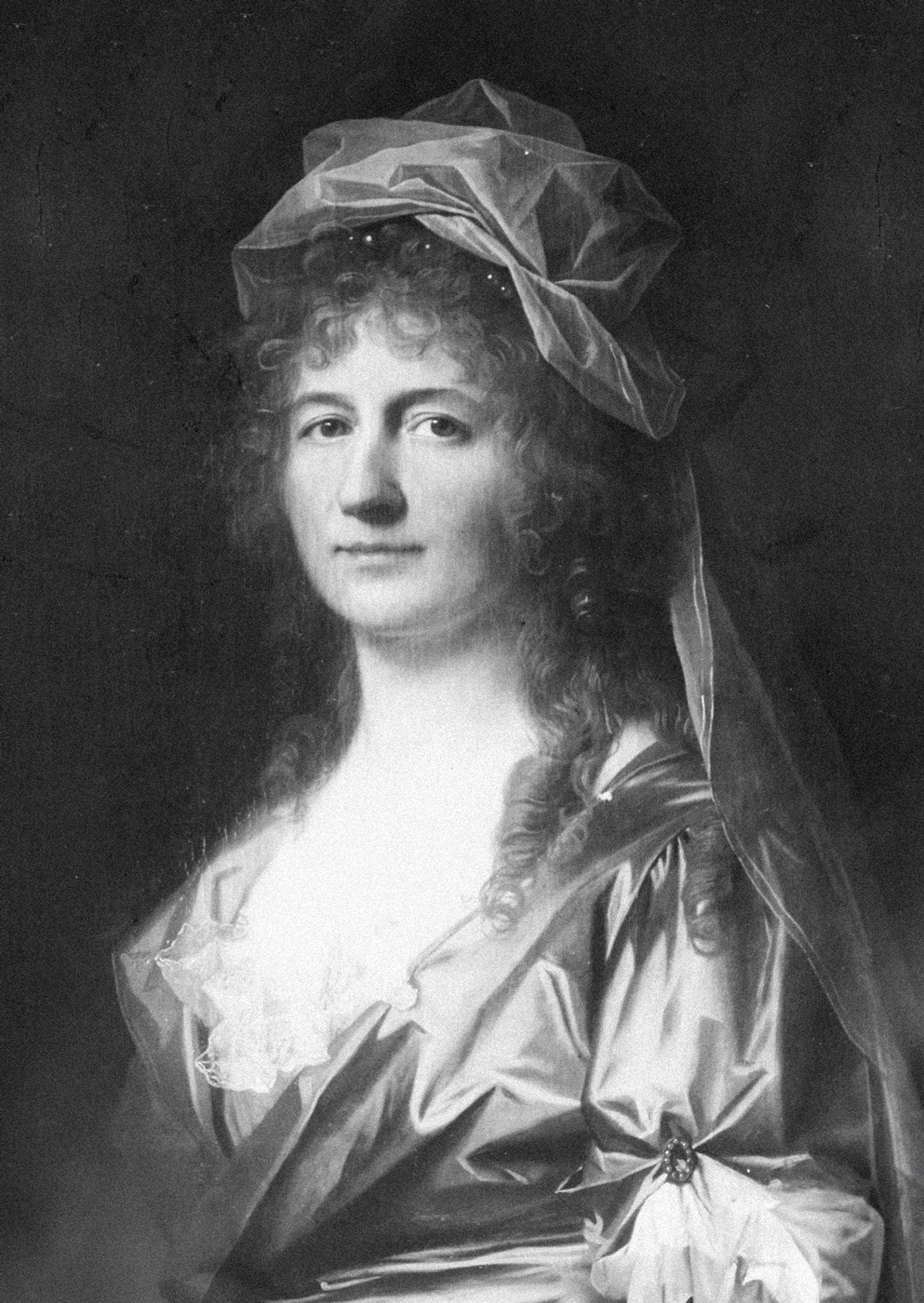
However none of this freed Hans Jonathan. Because the 18th century was the nineteenth, he discovered himself in a rotten state certainly, and began pushing again in opposition to his lot in life. He repeatedly broke his night curfew, spending time within the metropolis and mingling with locals, guests, and college students finding out in Copenhagen. This infuriated Henrietta. She would keep up ready for him, then lecture him when he lastly returned. Henrietta was a well-off, highly effective girl with allies all through the higher ranks of Danish society. She had no hassle placing her foot right down to rein in a disobedient teenage slave.
Issues reached their breaking-point initially of 1801 when better hostilities flared and Denmark discovered itself getting ready to warfare with the UK. Usually these two international locations obtained together with one another, however that was primarily as a result of Denmark tended to be cautious and deferential. The British as a colonial and buying and selling energy had been brash, dominant, heavy-handed, and hypercompetitive. They had been particularly inquisitive about maintaining warfare provides out of the fingers of their most reliable adversaries—the French. So when Denmark sought to enter into an alliance with Russia, Sweden, and Prussia to facilitate commerce with France, it flung British hackles into the stratosphere. Enraged, Nice Britain intercepted a bunch of Danish buying and selling ships, setting the scene for direct naval battle. Up in opposition to essentially the most highly effective navy on the planet, Denmark put out a name for patriotic males to enlist.
Henrietta Schimmelmann’s 20-year-old son enthusiastically took up the decision and went to serve within the Royal Danish Navy. Proper behind him was a equally keen 16-year-old Hans Jonathan—till Henrietta caught him and stated completely not. Hans argued that he didn’t must observe her guidelines. Appalled, Henrietta reached for a cane and whacked the younger man with it a number of instances to indicate him who was boss. That did it. Later that night, Hans stated a fast goodbye to his mom, then walked off the Schimmelmann property and joined the Navy anyway.
Henrietta went to the police. Her son had spoken to them simply two days prior, reporting the disappearance of cash from his possession—200 Danish rigsdalers (a number of thousand {dollars} in fashionable USD). There isn’t a proof that this had something to do with Hans Jonathan, however Henrietta determined responsible her slave for it anyway—on high of complaining about his operating away. This transfer was a chance that would quickly have turned very darkish, as theft in Denmark had continuously been handled as a capital offense. Henrietta emphasised that the punishment she sought was merely to have Hans Jonathan despatched again to St. Croix and bought. That would put him in his place—actually and in any other case.
In the meantime, the newly minted naval recruit was about to assist his present nation face the British. It was the start of April, and Britain was desperate to catch Danish ships in port at Copenhagen as early as potential. Any later within the spring, and the ice would soften sufficient to danger letting the Russians out to help Denmark. In Copenhagen, the Danes would have the home-field benefit, however that was all that might be stated for them, as their fleet was a lot smaller than the British Royal Navy and never remotely as well-trained.

The Danish folks tended to be quiet about their devotion to their nation, however when the Battle of Copenhagen started on 2 April 1801, Denmark discovered itself whipped right into a fiery patriotic frenzy. Hans Jonathan was assigned to the Charlotte Amalie, a ship named after a queen consort from a century earlier. The ship took the not-quite-17-year-old and his shipmates straight to the guts of the motion. Barely 300 metres from two enormous British ships, the Charlotte Amalie exchanged fireplace with the British over the course of a harrowing 4 hours, because the docs beneath the deck of the ship desperately tried to maintain up with the variety of males being wounded or worse. The Danish navy did get a lift from Copenhagen’s slender harbour, which was troublesome for the big British vessels to navigate; Britain briefly wavered and thought of retreating, however then regained the higher hand. With British victory inevitable, British Vice-Admiral Horatio Nelson despatched a letter to Danish Crown Prince Frederick proposing a ceasefire—the acceptance of which, he added, would preserve him from having to set fireplace to the captured Danish ships with the crews nonetheless inside. Frederick accepted, ending the Battle of Copenhagen and kick-starting negotiations between the 2 international locations.
The Charlotte Amalie was battered and had misplaced about one-sixth of its males. However Hans Jonathan was unhurt, plus his captain observed his resolve and praised him particularly in entrance of others. On high of that, the Navy paid the younger man 15 Danish rigsdalers for his service in battle (between $200 and $300 in fashionable USD).
Hans Jonathan most likely thought that in becoming a member of the Navy in opposition to Henrietta Schimmelmann’s needs, he had made his level. In spite of everything, he had risked his life—and maybe secured a future for himself as a Danish naval officer as a substitute of a slave. It had been solely days for the reason that Battle of Copenhagen, however, assuming that Henrietta had given up, Hans went house to see his mom.
Henrietta had accomplished no such factor. The police had paid little consideration to her criticism—the approaching British risk to the town had been considerably extra urgent. With out reinforcement, Henrietta created a makeshift jail by locking Hans contained in the Schimmelmanns’ property. However after a few days she determined that she’d had sufficient, and launched him again to the Royal Danish Navy.
The Navy briefly assigned Hans to a ship referred to as the Denmark, the place he forthrightly shared his uncommon story with Captain Steen Andersen Bille. Subsequently, reassigned to the Elephant, Hans met a person very similar to himself: a slave named Peter Samuel who had additionally simply served within the Battle of Copenhagen. Not like Hans, Peter was within the Navy on the insistence of his proprietor. Nonetheless, the lads had a shared objective in securing their freedom. Luckily, they’d an influential ally in Hans’s earlier captain. Bille was a considerate man who had frolicked within the Danish West Indies and was sympathetic to the 2 males’s trigger. Higher but, he was so well-respected within the Danish authorities that he may merely take the problem on to Crown Prince Frederick—which he did.
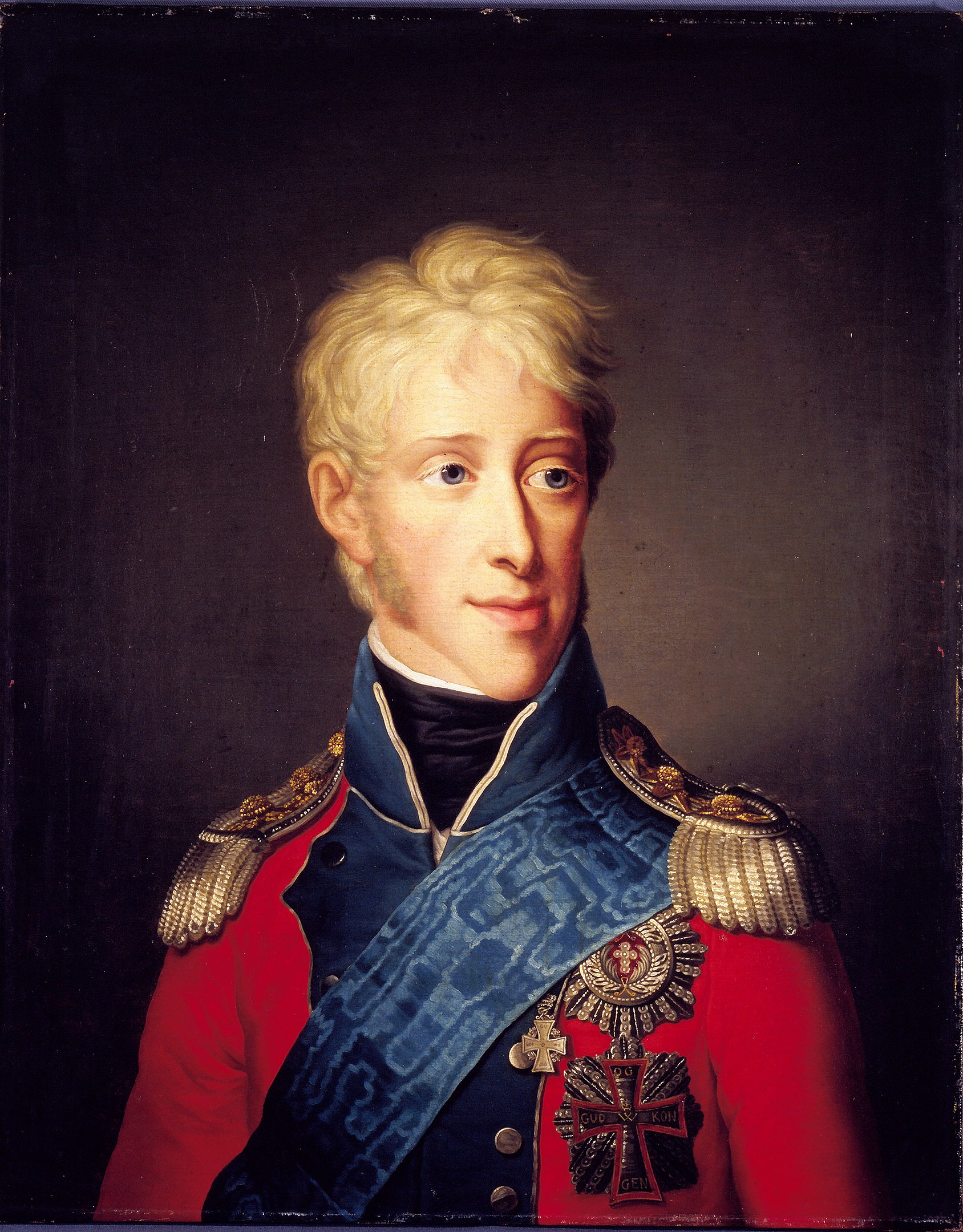
As biographer Pálsson factors out, this was a dilemma for Frederick, who knew each Steen Bille and Henrietta Schimmelmann properly, and was now caught between them in a dispute. Taking both place on the problem of the promising younger naval recruit who was additionally a runaway slave may have amounted to a betrayal.
Frederick thought-about. Probably within the spirit of Europe’s encroaching doubt about slavery, he ended up writing a really cautiously worded, three-page letter to Bille on 12 Could 1801, gently arguing that on homeland Danish soil, the one individuals who might be convincingly argued to be legally slaves had been prisoners whose sentences specified servitude. So long as Henrietta Schimmelmann was positioned inside Denmark correct, he continued, nobody in her family may qualify as something decrease than a free servant. Whereas the letter didn’t title Hans Jonathan particularly as the one who “is taken into account free and enjoys rights”, it did check with Henrietta Schimmelmann, so the meant referent was unambiguous.
It was greater than sufficient for Captain Steen Bille. On 14 Could, Bille formally bestowed freedom on Hans Jonathan. From a special commanding officer, however as the results of the identical letter from Crown Prince Frederick, his shipmate Peter Samuel obtained the identical. Lastly free at 17, Hans Jonathan rented a room above a tavern, stuffed it along with his possessions together with the beloved violin, and started to think about tips on how to pursue the lifetime of his personal that he had sought for therefore lengthy.
The event left Henrietta Schimmelmann newly irate. Solely a handful of individuals had seen Frederick’s letter to Bille, and it isn’t clear if Henrietta was amongst them; both means, the implications would have allowed her to deduce a serious danger to her capability to keep up her family the way in which she wished it. The letter was, from this angle, a harmful precedent. On its foundation, any of the different eight slaves in her family (together with Hans Jonathan’s mom, uncle, and cousin) may merely stroll away with the presumed blessing of Denmark’s very ruler. Unacceptable! On 19 Could—solely every week after the discharge of Frederick’s letter—Henrietta marched straight again into the identical police station as earlier than and submitted a proper written criticism, asking the authorities to arrest and query Hans Jonathan.
This time, the law enforcement officials went out in search of Hans. Discovering him on the tavern, they defined the problem. Hans instructed them he wished to serve the Danish monarch by remaining within the navy—and he instructed the police that he would offer proof of getting been let out.
The criticism was left to be resolved by the courts, however when the case got here up in entrance of the judges, Henrietta Schimmelmann was not in attendance. She had vowed to ship related paperwork through her middleman—her steward Peder Hansen—however when Hansen arrived, he claimed to haven’t any paperwork to indicate. The courtroom threw out the case, and Hans Jonathan was free as soon as once more. However Henrietta had not given up. She went to the navy and requested 400 rigsdalers as compensation for dropping her slave (someplace between $5,000 and $7,000 in fashionable USD). The Navy brushed her off.
A badly timed coincidence gave her a brand new concept. On 20 July 1801, a slave named David Tams slipped away from his rural Danish family and made a wild sprint for Copenhagen. He too was from St. Croix and had been introduced again to the homeland by slaveowners. Nevertheless, his try at coming into the town obtained him arrested. Tams’s irritated proprietor then opened a civil lawsuit hoping to ascertain a authorized declare on the person—and Henrietta Schimmelmann, bringing an entire new which means to the time period “observe go well with,” determined to do the identical. Legally, this was a lot simpler than her earlier accusations of theft and desertion; if she gained the civil case, it will merely set up that she owned Hans Jonathan, finish of story.
It was not apparent how this new courtroom case would go. On the one hand, bringing slaves from the Danish West Indies to Denmark itself had been technically unlawful since 1795. On the opposite, Hans Jonathan had arrived in Denmark earlier than that time, and his transfer to Copenhagen had not mechanically voided his standing as a slave. If Henrietta owned him, she ought to nonetheless have the precise to promote him. With that, on the night of three December 1801, 4 law enforcement officials set off for the tavern to arrest Hans Jonathan—who as soon as once more defined the existence of the letter from Crown Prince Frederick to Captain Steen Bille making certain his freedom. The law enforcement officials had been unmoved. A slave with a private letter from the Crown Prince of Denmark? Suuuure. Inside an hour, Hans was in a cell.
On the time, Danish courtroom processes had been carried out slowly and primarily via written statements. Nevertheless, then, as now, entry to expert authorized help was not equitable. Henrietta Schimmelmann, rich and linked, had a steadfast lawyer named N. C. Bierring, and he did a lot of the work that there is no such thing as a proof she ever made an look in courtroom herself. On the different finish of the size, Hans Jonathan was unable to afford the providers of any lawyer, and was assigned an lawyer by the courtroom, a person regarded as named ‘Beyer’ (although sources don’t agree).
Bierring slammed Hans Jonathan for his (supposed) shameless mendacity—to assume {that a} slave may have had the backing of the Danish crown prince! Captain Bille nonetheless had the copy of the letter from Crown Prince Frederick, and both means may have established the reality if referred to as as a witness. Nevertheless, for some cause, Beyer didn’t name Bille, which suggests some incompetence because it left the accusation of mendacity unchallenged. Beyer additionally made a couple of errors in recounting the info of the case, and at one level lapsed into sarcasm. Bierring leapt on the likelihood to criticise Beyer’s tone, undercutting the inconvenient proven fact that a few of Beyer’s arguments had advantage and energy. For example, Beyer had been via the Danish authorized code and located completely no assist for slavery in homeland Denmark. Additionally, had Henrietta Schimmelmann not stated in her written assertion to police that Hans Jonathan had “left her service”—and thus by no means been something lower than a servant?
Each single one of many witnesses was from Henrietta Schimmelmann’s family, and meant to assist the plaintiff. Nevertheless, they had been lower than cooperative. Emilia Regina was understandably unhelpful when it got here to answering questions in a case in opposition to her personal son (particularly together with her personal freedom presumably being at stake as properly). Likewise, Henrietta’s steward Peder Hansen stood up for Hans Jonathan and identified that Henrietta had bodily crushed him “a couple of instances with a Spanish stick” and that Hans had left with a purpose to serve his nation. Beyer additionally requested: who was the younger man’s father, anyway? A “free white man” or a slave? Presumably the thought was to discover the likelihood that Henrietta Schimmelmann’s declare on Hans Jonathan was removed from watertight—however the judges accepted Bierring’s objection of “irrelevant” and refused to let Emilia Regina reply.
Towards the tip of Could 1802, the analogous case of David Tams wrapped up—Danish judges sided with the person’s proprietor. For Hans Jonathan solely days later, the judges likewise introduced on 31 Could their resolution that Hans Jonathan was Henrietta Schimmelmann’s property and he or she was legally permitted to ship him again to the Danish West Indies to be bought. 4 of the judges noticed no room for argument. The fifth, a younger man not a lot older than Hans himself, ended up siding along with his seniors but in addition made room in his feedback for a dissenting argument that Caribbean slaves arriving on Danish soil may solely be servants slightly than slaves—exactly the conclusion that Crown Prince Frederick had drawn in his not-at-all-fictional letter.
The courts had not discovered Hans responsible of any crime, however until he selected to attraction the decision, he was required to show himself in to Henrietta Schimmelmann inside 15 days. The courtroom doesn’t appear to have observed that, as a technique for holding a runaway, this plan left one thing to be desired.
Within the days following the decision, a abstract of the case and its end result had been revealed and disseminated as ordinary to the folks of Copenhagen—thus making very public the dispute between the socialite and the escaped slave. One Danish authorities official even wrote to the Danish West Indies to warn them that an ill-behaved man named Hans Jonathan may quickly be bought on the island. For the social elite, the small print of the civil lawsuit made for irresistible gossip, to the purpose that it might have develop into an issue for Henrietta Schimmelmann despite her nominal victory.
Hans Jonathan didn’t request an attraction. He additionally didn’t give up himself to Henrietta Schimmelmann. He was nowhere to be discovered. As soon as the 15-day interval had elapsed, Henrietta gained the authorized proper to have him positioned and arrested. Nevertheless, she doesn’t appear to have requested police help. As an alternative, inside solely a 12 months, she moved her family out of the town altogether.
Nevertheless one-sided, the case was sufficient of a landmark that the story of the younger biracial Black man up in opposition to a crushing system stays pretty well-known in Danish authorized circles. However the man himself had apparently walked out of the courtroom and into the streets of Copenhagen and vanished. Much more than 150 years later, a complete 1964 article by Danish regulation professor Knud Waaben would level out that historians had no concept what had develop into of David Tams and Hans Jonathan.
Round 2003, a handful of Icelanders discovered the 1964 Knud Waaben article. One among them reached out to Waaben, suggesting the likelihood that Hans Jónatan—the Caribbean-born ancestor who had arrived in Djúpivogur with the Danish buying and selling ships—was the identical Hans Jonathan who had confronted the punitive Danish authorized system solely very barely earlier. All the items match, and Hans Jónatan’s backstory stuffed within the lacking historical past.
Shortly after the 1802 verdict was learn, Hans Jonathan briefly and surreptitiously stopped by Henrietta Schimmelmann’s home to collect his possessions, together with the treasured violin, and say goodbye to his mom.
On the time, the Danish empire included each Norway and Iceland. Whereas Norway was a powerhouse on the extent of Denmark itself, Iceland was closely agrarian and deep within the clutches of its colonial overlords. In 1800, the island’s 50,000 folks had been break up between so many particular person farms and tiny rural cities that even the biggest settlement, Reykjavík, had a inhabitants of not more than 300. Whereas Iceland had its personal historical past, its personal language, and its personal literary custom, Denmark had it in a stranglehold. The Danish primarily maintained a monopoly on commerce with Iceland, forbidding the locals from buying and selling with anybody else, and sometimes handled the island like a pesky dependent baby.
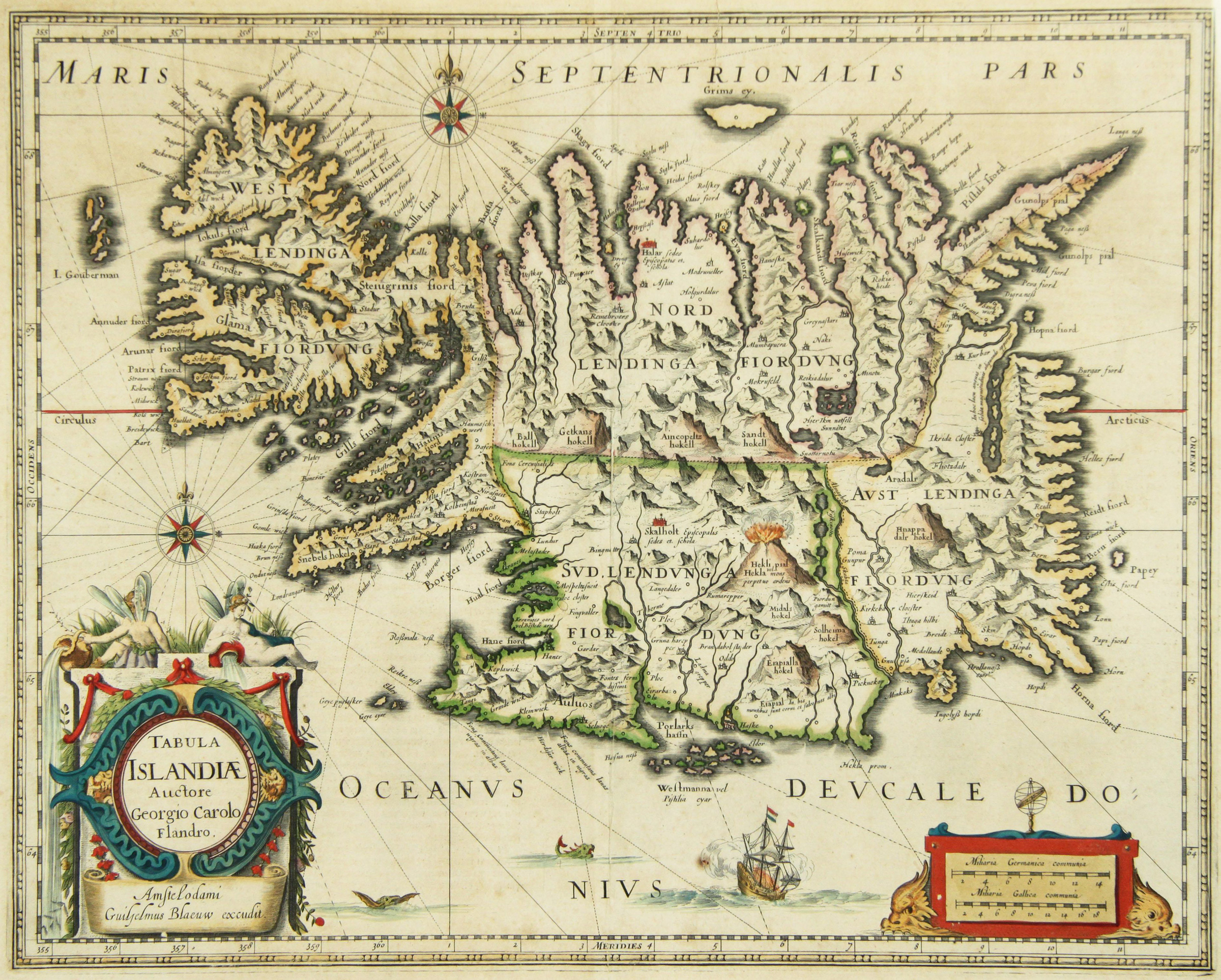
It was across the finish of June 1802—simply after the northern ice had melted for the summer season—that one of many ordinary Danish trade-ships docked on the city of Djúpivogur alongside the japanese fjords of Iceland and Hans Jonathan stepped off. The journey had taken about two weeks. It isn’t identified whether or not Hans selected this location particularly, or just determined to go away Copenhagen for any fairly far-flung vacation spot as quickly as he may. Additionally it is unclear whether or not he meant to remain in Djúpivogur or to maintain transferring round as wanted. Maybe, within the method of a gifted musician, he performed it by ear.
At the very least he may ask round for alternatives at his vacation spot immediately. Djúpivogur, inhabitants roughly 100, had sprung up as a buying and selling submit, and because of this various the locals spoke Danish in addition to Icelandic.
None of them would have been in any respect aware of the sight of a Black man, even a light-skinned biracial Black man. Luckily, the locals welcomed him with out xenophobia. They probably considered him because the form of Danish man they had been aware of: a service provider. Which, actually, is what he quickly turned. Virtually instantly following his arrival in Djúpivogur, Hans met the supervisor of the city’s basic retailer, Jón Stefánsson, and was employed as an assistant.
Stefánsson was identified for his kindness in the direction of Djúpivogur’s townspeople and its only a few guests. He was a businessman but in addition a songwriter of native renown, to not point out an enthusiastic collector and lender of books. To Hans, Stefánsson quickly proved to be a key mentor and a detailed buddy. Stefánsson was Icelandic, however he spoke Danish as properly; his spouse was additionally from Denmark.
Icelandic census information precisely listing Hans Jonathan’s title, occupation, and birthplace—suggesting that he was trustworthy about his origins and background, maybe as a result of having rapidly established belief with the folks of Djúpivogur. Nevertheless, he should have weighed the dangers whereas deciding what to inform his new neighbours. With so many Danes round, phrase may conceivably have reached the relentless Henrietta Schimmelmann. Alternatively, particularly as soon as he turned a skilled businessman, Hans can also have been conscious that the prices of retrieving an errant slave from so distant wouldn’t have been worthwhile. In addition to, by 1807, Denmark was busy contending with a resurgent United Kingdom, resulting in a Second Battle of Copenhagen and its humiliating aftermath (together with British occupation of the Danish West Indies). A lacking slave was not excessive on anybody’s precedence listing.
By 1809, on a sparsely populated island the place the Atlantic slave-trade was not prone to be on many individuals’s radar, Jón Stefánsson translated fiery abolitionist essays from Danish into Icelandic. It’s possible that this challenge sprang from discussions that Stefansson was having along with his assistant.
Hans had discovered a distinct segment for himself in each respect. As a younger assistant storekeeper, he gained a fame as a stellar record-keeper, dedicated to each accuracy and integrity. A few of his information from the Djúpivogur retailer survive, in tidy Danish-style handwriting. The native oral historical past preserved tales of Hans Jonathan’s insistence on rectifying accounting errors no matter who was within the flawed. He gave generously of his time, sharing sensible abilities associated to all the pieces from arithmetic to building to wayfinding. One other of his routine duties was serving to guests to Djúpivogur navigate the cruel native terrain. A Norwegian surveyor, a Scottish preacher, and a Danish buddy of the Stefánssons’ all ended up mentioning Hans Jonathan by title of their memoirs.
He was by no means a rich man in Iceland—by no means a landowner, in a spot the place just about everybody else was. However he had his freedom and sufficient to dwell on, and he constantly spoke up for the rights and wellbeing of these much less lucky. It’s unsure whether or not he realized in 1816 that Henrietta Schimmelmann had died. Again in Denmark, he might have been shut sufficient to her kids to deduce that they didn’t share their mom’s eager curiosity in proudly owning slaves. At any charge, from that time onwards, nobody can be chasing Hans Jonathan with a metaphorical internet.
A couple of years later, the storekeeper Jón Stefánsson contracted a severe sickness, and died in 1819. A Danish mercantile firm purchased the shop and put 35-year-old Hans Jonathan in cost. Across the identical time, romantic sparks developed: he and a 21-year-old girl named Katrín Antoníusdóttir caught one another’s consideration. She got here from a farming household based mostly close to Djúpivogur, and was a hard-working, expert, well-liked member of the group. On 28 February 1820, they had been married in an area church; the catering was supplied by Jón Stefánsson’s widow Ellen Katrín.

To today, the final apply in Iceland is for kids’s second names to be based mostly on the primary title of one of many mother and father; practically everyone seems to be ‘son of X’, ‘daughter of Y’, or ‘baby of Z’. In different phrases, it didn’t matter that Hans Jonathan had by no means had a mainland-European-style household surname within the first place. Nevertheless, he and his spouse determined to deal with Hans’s second title like a surname anyway, and to cross it alongside to their kids. Ludvik Stefan Jonathan was born on 26 Could 1821, and Hansina Regina Jonathan adopted on 4 August 1824.
In between the arrivals of the youngsters, nevertheless, the shop at Djúpivogur bumped into monetary hassle. Hans couldn’t stand the sight of poverty and ended up placing the shop in debt with a purpose to help the locals who had been struggling essentially the most. In 1823, he left his job and moved his household to a rental farm. This was a small and undistinguished property, however the couple’s mixed abilities—Katrín having grown up on a farm twice the scale—allowed them to carve out a life there. Data of the household’s possessions attest to music-making, ice-skating, and book-reading alongside on a regular basis farmwork.
However Hans’s former employer remained suspicious of him. In 1827, the brand new retailer managers concluded that some grain was lacking from storage, and requested whether or not he knew something about this. The problem by no means obtained a decision. Whereas out within the fields, 43-year-old Hans Jonathan died instantly of what was most likely a cerebral hemorrhage. On condition that his household was solely renting the farm at Borgargarður, Katrín had him buried at her circle of relatives’s farm in close by Hals. Nevertheless, as headstones had been very costly, the precise location of his grave isn’t identified.
Lots of Hans’s belongings had been liquidated to settle the excellent money owed—although his beloved violin went to his son Ludvik. Katrín probably continued operating the farm at Borgargarður and elevating the youngsters on her personal, not less than till she remarried in about 1834 and the household moved to the city of Bulandnes a number of years later. Ludvik and Hansina each married and began households of their very own, however then each died of their 30s. Luckily, Katrín lived till 1869, which was lengthy sufficient to complete elevating her six surviving grandchildren and see all of them develop into domestically well-respected younger adults.
Slavery was lastly abolished within the Danish West Indies in 1848, although the system of sure servitude that changed it was not significantly better. Solely the decline of the sugarcane trade lastly introduced all of it crashing down. In 1917, with the plantation period behind and the colony turning into a monetary burden, Denmark bought the Danish West Indies to the US, which paid $25 million and renamed the territory the U.S. Virgin Islands. Its capital on the island of St. Thomas remains to be named Charlotte Amalie. As for Iceland, it lastly gained full independence from Denmark in 1944, and Reykjavík has develop into a metropolis of greater than 100,000 folks.
Over a century later, within the Nineties, Dr. Kári Stefánsson didn’t got down to examine Hans Jónatan’s genetic historical past. As an alternative, he turned a neurologist, and moved to the US to finish his coaching on the College of Chicago, then on to Harvard College to show. However Stefánsson discovered himself repeatedly considering of the untapped scientific potential of mapping and finding out the gene pool in his house nation.
Stefánsson realised that Iceland’s genetic homogeneity may make it a spectacular pure laboratory. Whereas the mix of a small founding inhabitants and a low variety of newcomers wouldn’t get rid of random mutations within the genome over time, it will actually management for genetic variance between people to an uncommon diploma. One among Stefánsson’s earliest concepts alongside these traces, as an example, proposed evaluating the genetic materials of Icelanders with and with out a number of sclerosis (MS). Given extraordinarily related ancestry, the DNA of those two teams can be overwhelmingly comparable. If such a research recognized a tiny variety of systematic variations between the people with MS and people with out, these variations can be candidates for the genetic origins of MS in people extra usually. The research can be all the higher for going down in a rustic with common well being care and—characteristically—in depth medical record-keeping.
By 1996, the possibility to launch an unlimited Icelandic genome challenge was too tempting to cross up. Stefánsson resigned his place as Chief of Neuropathology at Harvard and moved again to Iceland to ascertain deCODE Genetics. Whereas deCODE was all the time a non-public biopharmaceutical firm, and there are privateness considerations within the assortment of health-related data, many Icelanders have been prepared to offer consent. The quantity represented within the knowledge held by deCODE is now properly above two-thirds of the grownup inhabitants of the nation—and the findings have been in contrast to the rest on this planet. Except for figuring out markers of susceptibility to specific genetic illnesses, the findings have yielded high-resolution fashions of the human genome, impressed new drug improvement, and illuminated a number of elements of how genes recombine in human offspring.
Within the final decade, with new scholarly consideration from a number of angles, the total story of Hans Jonathan lastly got here collectively. College of Iceland historical past professor Gísli Pálsson revealed a full biography of Hans in Icelandic in 2014, with an English translation by Anna Yates (The Man Who Stole Himself) following in 2016.
In the meantime, deCODE undertook one other milestone. Remembering the tales of his youth in regards to the Black ancestor in his father’s hometown of Djúpivogur, Stefánsson began a challenge with a number of colleagues to reassemble the person’s genome from the genetic data in his descendants alone. What made the duty easy was that the sign of any current African ancestry can be clear in opposition to the backdrop of the restricted Nordic/Celtic gene pool that had characterised Iceland for 1,200 years. Of their 2018 paper, the researchers verified that the one noticeable supply of current African DNA within the Icelandic gene-pool within the fifty years between 1880 and 1930 had come from just one particular person with XY intercourse chromosomes: Hans Jónatan. His Y chromosome, inherited from his father, was typical of mainland Europe; his X chromosome, from his mom, was clearly African in origin.
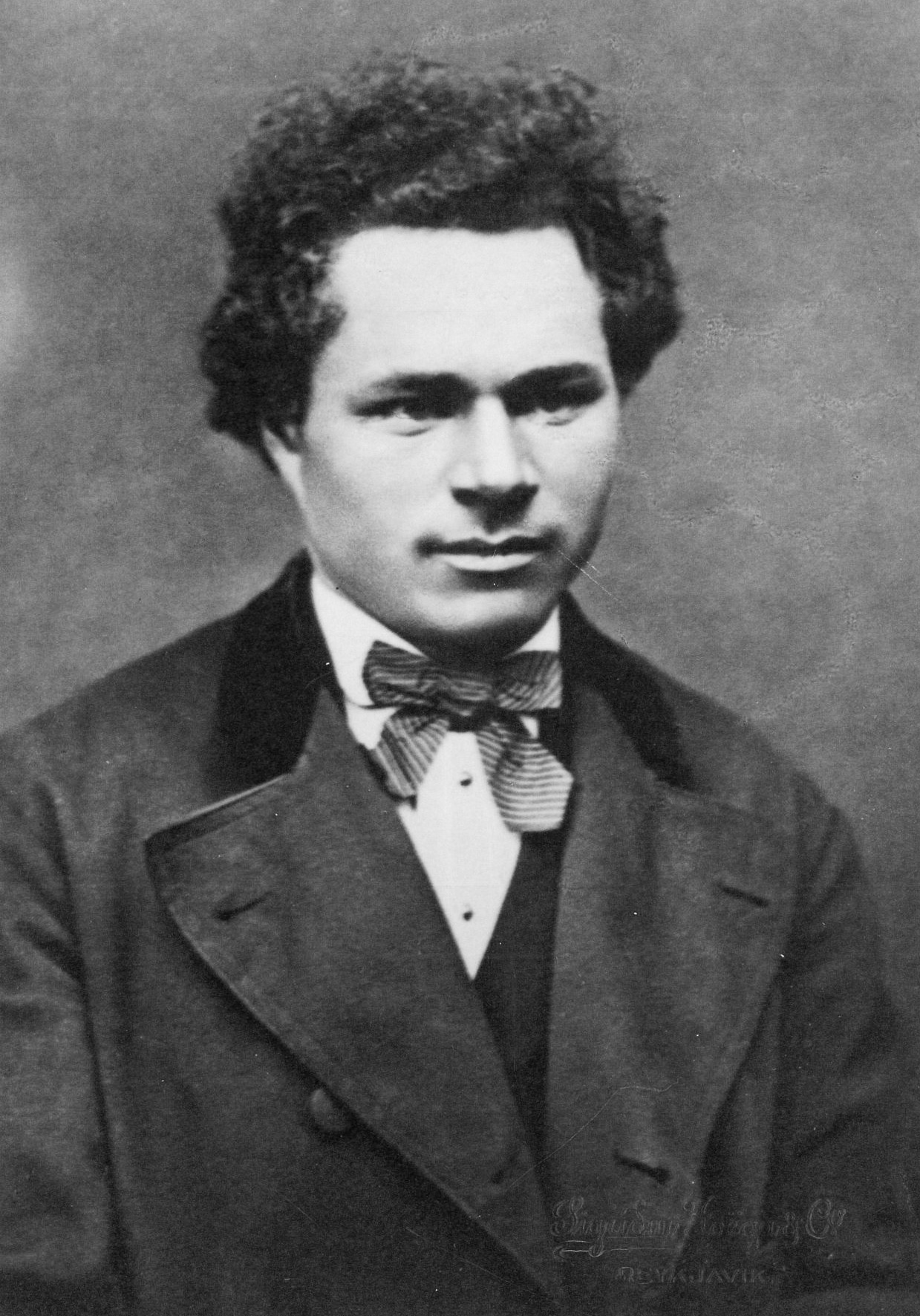
Various Hans Jonathan and Katrín Antoníusdóttir’s descendants have been famous musicians, and great-granddaughter Hansína Regína Björnsdóttir was a widely known early photographer within the late nineteenth century. By the 2010s, the genetic researchers who collaborated on the 2018 paper—17 geneticists together with Kári Stefánsson himself—discovered 788 verified residing descendants. They partially sequenced the genomes of 182 of those descendants, then for 20 of these, the researchers sequenced their genomes of their entirety. Whereas no single descendant may have inherited all and even most of Hans Jonathan’s DNA, completely different descendants obtained completely different items and mixtures, and with the affect of the baseline Icelandic gene-pool (i.e. Katrín) filtered out, Hans’s genes from elsewhere have been revealed. Whereas the id of Hans Jonathan’s “free white man” father has not but been decided, the researchers have discovered appreciable perception in an evaluation of Hans’s maternal DNA.
We all know little or no about Emilia Regina’s background from the historic report alone. Emilia Regina seems to have been born round 1760, presumably the daughter of certainly one of three house-slaves at a sugar plantation referred to as “La Reine”, however it isn’t even clear whether or not she was born on St. Croix or transported there from Africa at a younger age. After Henrietta Schimmelmann’s 1802 civil lawsuit, Emilia Regina disappears from the report fully.
In 2017, Denmark issued a proper apology for the position it performed within the European slave-trade. Trendy genetics can’t presumably compensate for the hurt accomplished, however it could actually supply some solutions after-the-fact and assist descendants and their supporters put a number of the items again collectively.
The researchers on the 2018 paper zeroed in on Hans Jonathan’s maternal haploid genome—his DNA from Emilia Regina—and reported having been in a position to reassemble about 38 % of it. It is a beautiful quantity of knowledge gathered from fashionable descendants alone in regards to the mom of a person who died in 1827. Evaluating the DNA to reference populations from completely different elements of the African continent, the geneticists discovered that Emilia Regina was clearly linked with present-day populations of Nigeria, Cameroon, and Benin—significantly these of Yoruba descent. In reverse-engineering the DNA of a bunch of present-day descendants to make new discoveries about ancestors from centuries in the past, this case research is the primary of its variety.
To make sure, the weird circumstances of Hans Jonathan’s background, together with his glorious alternative of hiding place and the big variety of descendants he has, all ensured that this was a comparatively clear-cut demonstration of how the DNA of a single ancestor might be disentangled from all the pieces else happening in a inhabitants’s collective genes. Nonetheless, it’s a leap ahead for human understanding. Centuries in the past, slaves within the Americas kidnapped from Africa continuously hoped that they’d have the ability to sometime return. On the person stage, extraordinarily few had been in a position to take action; nevertheless, genetic family tree opens up the opportunity of making reconnections to bridge the gaping gap.
Because the editors of Nature Genetics commented in a brief editorial accompanying the discharge of the 2018 article on the background of Hans Jonathan, the challenge crucially entails “our interwoven genomic and social histories.” In different phrases, DNA is one thing of a time-capsule of all of our organic ancestors. To the extent that we’re our genes, we’re additionally the histories of those that got here earlier than us – simply as our personal histories will probably be interwoven with these to come back.
© 2024 All Rights Reserved. Don’t distribute or repurpose this work with out written permission from the copyright holder(s).
Printed from https://www.damninteresting.com/a-trail-gone-cold/
Because you loved our work sufficient to print it out, and skim it clear to the tip, would you contemplate donating a couple of {dollars} at https://www.damninteresting.com/donate ?

